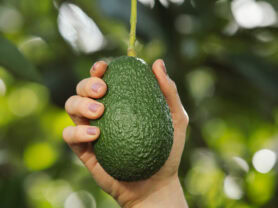
How California Avocado Growers Practice Environmentally Friendly Farming
California Avocado Farming Practices Respect The Earth California Avocado growers farm under robust federal and state…
These Golden State avocados are grown in the rich soil of California, warmed by its sunshine and cooled by gentle coastal breezes. California Avocados are locally and sustainably grown by California farmers who nurture the avocados and the land every step of the way to ensure that you can buy high quality avocados during the California Avocado season. They are committed to building and maintaining a sustainable California Avocado industry by using environmentally friendly farming practices, ensuring worker well-being, contributing to healthy communities and maintaining economic viability.
California Avocados are grown close to your home, meaning California’s premium avocados can go from grove to grocer in just a matter of days.
We love California. It’s a special place —
the people, the beaches, the forests,
the mountains and everything else